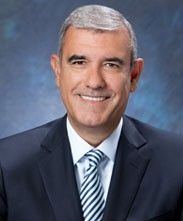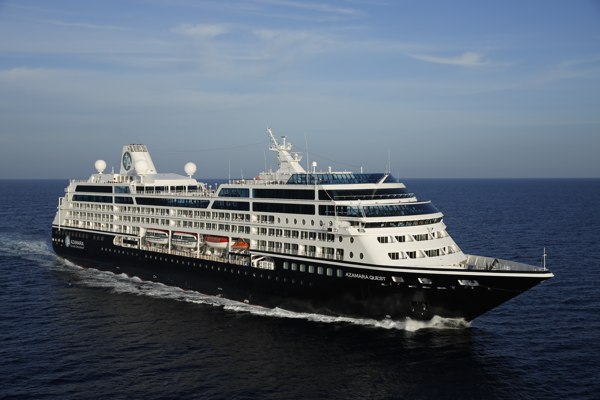Larry Pimentel, CEO of Azamara Club Cruises, talks about his career and the company he now manages.
1. Brand identity is critical in the cruise industry, what your key differentiators compared to your competitors?
Our biggest issue is awareness and breaking through in a very cluttered market where there are lots of new ships and multiple holiday options. Once we get a guest aboard, we win them over and they become our most influential marketing tool. Word of mouth is powerful.
What makes us unique are; staying longer in port, more days and overnights is distinctly different from what happens in the majority of the cruise industry. For example, in the Mediterranean, if you go to St. Tropez and you only visit from 8 to 5, you have missed St. Tropez. St. Tropez really comes alive at night; in fact, most of the Mediterranean comes alive in the evening. The nightlife, the music, that great meal at a Michelin star restaurant these are the things that make a unique local experience.
The size of our ships will allow us to get to the heart of a destination, right into the downtown. Also, we design our itineraries so that we visit during special events like; being in Monte Carlo during Grand Prix, being in Rio during Carnival and we procure tickets for our guests at reasonable prices. We seek out interesting world events like the Floriade in Holland, which only happens once every 10 years and is the world’s largest flower exhibition with over 20km of flowers and magnificent exhibits. The Modal Jazz Festival in Norway, which is one of the world’s best jazz festivals but most people have never heard of it.
Recognizing that we are an international product, we added other things to enhance the cruise experience like including gratuities because we realize that guests across the world have different tipping standards.
Bottled water, specialty coffee, tea, soft drinks are all included which normally cost extra, are included. Transport to city centers in ports, is also included. And finally, we include boutique wines from South Africa, Chile, Argentina, for lunch and dinner.
2. How would you segment the cruise industry by tiers? For example, how would you segment the following cruise lines and what would you see as their value proposition to customers; Cunard, Holland America, Celebrity, Oceania, Regent, Seabourn, Silversea, Crystal, Hapag Lloyd?
We have 6 competitors. Our largest competitor is actually boutique hotels. Last year 20% of our guests had actually never been on a cruise before. For those who know about the cruise industry, this is an impressive statistic. The reason why we attract these guests, are the longer stays we offer in the ports that we visit.
Our top quality cruise competitors are; Silversea, Seabourn, Crystal, Regent and Oceania.
3. How do you measure success for yourself and for Azamara?
I think convincing the bigger company (Royal Caribbean), that it makes sense to build new ships and continuing investing in the Azamara brand. I would love to end my career by building some of the greatest small ships in the world.
Having received Conde Nast and Berlitz world’s best awards 9 times with 3 brands, that is impressive and I have done that. For me, it is about building the next generation of excitement but in small ships. There are a lot of places to put small ships. I think we will get that opportunity because we have created it.
4. If you had a 15 second spot on Singapore’s most popular TV channel, during their most popular TV program, what would you say about Azamara to that captive audience?
Azamara Club Cruises is probably a cruise line you have never heard of but it is one that you will want to go on. It is owned by Royal Caribbean Cruises which is one of the largest and most successful passenger shipping companies. Azamara is its baby boutique brand with 2 ships and it has one distinction. It stays longer and has more overnights allowing you the opportunity to see the destination from early in the morning till late at night, as it should be seen.
This is a global centric product in 3 ways, 1) we go to 60 countries and 180 ports, 2) we have 408 stellar crew on each ship looking after only 694 guest that come from over 50 countries and 3) are a the guests are an international mix.
5. What do you think the cruise industry in Asia will look like 10 years from now?
Royal Caribbean is the leader in cruise ship innovation. The new ships are awe inspiring. All ships are not created equal. Cruises can be segmented by geographic location, family cruising, couples, longer, shorter, big ships, medium sized, small ships, culinary focus. It is very difficult for the consumer to define which product is right. Selection and choice is fantastic and awesome. There is now ship within a ship experience (up market within mass market), like concierge level within a hotel.
The traditional mass market cruise ship business model, in large part, focuses on generating revenue away from ports when the casino and shops can be open.
Our product, Azamara Club Cruises, is about destination immersion. We spend longer time in port with more overnight stays. It is about the creation of night tourism.
Our ships are smaller in comparison and we are a boutique brand that provides an intimate experience with destinations and exceptional on-board service. This creates a distinguished product with an up market, unique, exclusive experience. With the size of our ships, it gives us access to a new selection of ports which large ships cannot access. We can go to out of the way places that are unique and special for our guests like the Portuguese cities of Penichi and Bougeous.
Additionally, we have created the “wow” factor with service. Our focus is clearly on the destination but we exceed our passenger expectations by having an incredibly high hospitality standard. The destination focus gets our guests on board, the service drives our return business.
We are a global centric product, not an American centric product.
6. Oceania has just introduced the Marina, how does that influence your future strategy for Azamara and does that create a need for new ships?
Yes, we love it. They are going bigger but we are staying focused on smaller. Smaller ships are key to having a destination focus which is our differentiator.
Oceania and Princess Cruises have the same type of ships as Azamara, are you similar?
That is like comparing American Airlines to Singapore Airlines. The airlines might operate the same hardware like Boeing 777s but that is where the similarities begin and end. The service, the destinations are completely different. Given a choice, there is no comparison.
In the same way, Azamara is a jewel box experience. We are providing a unique guest experience.
7. How did Azamara start?
In 2007, Royal Caribbean purchased Pulmantur, a Spanish cruise operator. They pulled 2 of the ships from their fleet and created Azamara cruises. The ships were sailing full but having trouble being a differentiated product in a market and were only generating ‘4 star’ pricing. The current product really started in April 2009, when I came to the company and we changed the name to Azamara Club Cruises. In less than 1 year, we have created the highest customer satisfaction scores in Royal Caribbean’s 40 year history.
The company name, Azamara was created by truncating two romance language word; Azur meaning blue and Mar meaning sea. So the meaning is the brightest star in the deep blue sea.
We go to 180 ports and 60 countries in a year with only 2 ships.
8. Where are you seeing growth?
Our biggest growth is coming from Australia. They have gone from 3% of our guests to 7% in just 1 year. This tells us that our product enhancements (included gratuities and wine) are resonating well with them. Their number 1 destination is Europe. We see growth from the UK and Continental Europe.
We also see the average age of our passengers dropping dramatically by 11 years and becoming younger where we see a lot of guests who are mid-40s. Again, this is a direct result of our destination focus.
9. Here is an example of how we make a unique night tourism event?
At the port of Livorno, Italy, our guests will leave the ship in the afternoon. They will take a drive through the Tuscan rolling hillside in the Chianti Classico area visiting a small bespoke town called Greve. They will taste fine wines from the region and sample different balsamic vinegars. At sunset, they will arrive to the Castello di Verrazzano at sunset. Magnificent gourmet dinners are served in the room where Michelangelo carved “The David”. After the first course, 3 tenors from the Florence Opera come in and perform. The guests were absolutely blown away by a unique, exclusive, intimate experience.
10. How do you decide on your destinations?
Go for the extraordinary. What is it that most ship passengers would not get a chance to do.
11. What are the most valuable lessons you have learned as CEO having been at the top of several leading cruise lines like Cunard, Seabourn and SeaDream?
You need to have a very clear vision of where you want to go. You have to know what you are trying to do. I need to get the big picture understood by everyone in our organization and our external partners. I need them to know what Azamara Club Cruises all about. It is about defining who it is, what you are, and educating people about it. Education is a means of gaining superiority and quality but it is not so simple to implement. The vision must create differentiation as that is what will make you successful.
Content is copyright of honestcruiser.com and pictures used with permission from Azamara Cruises


